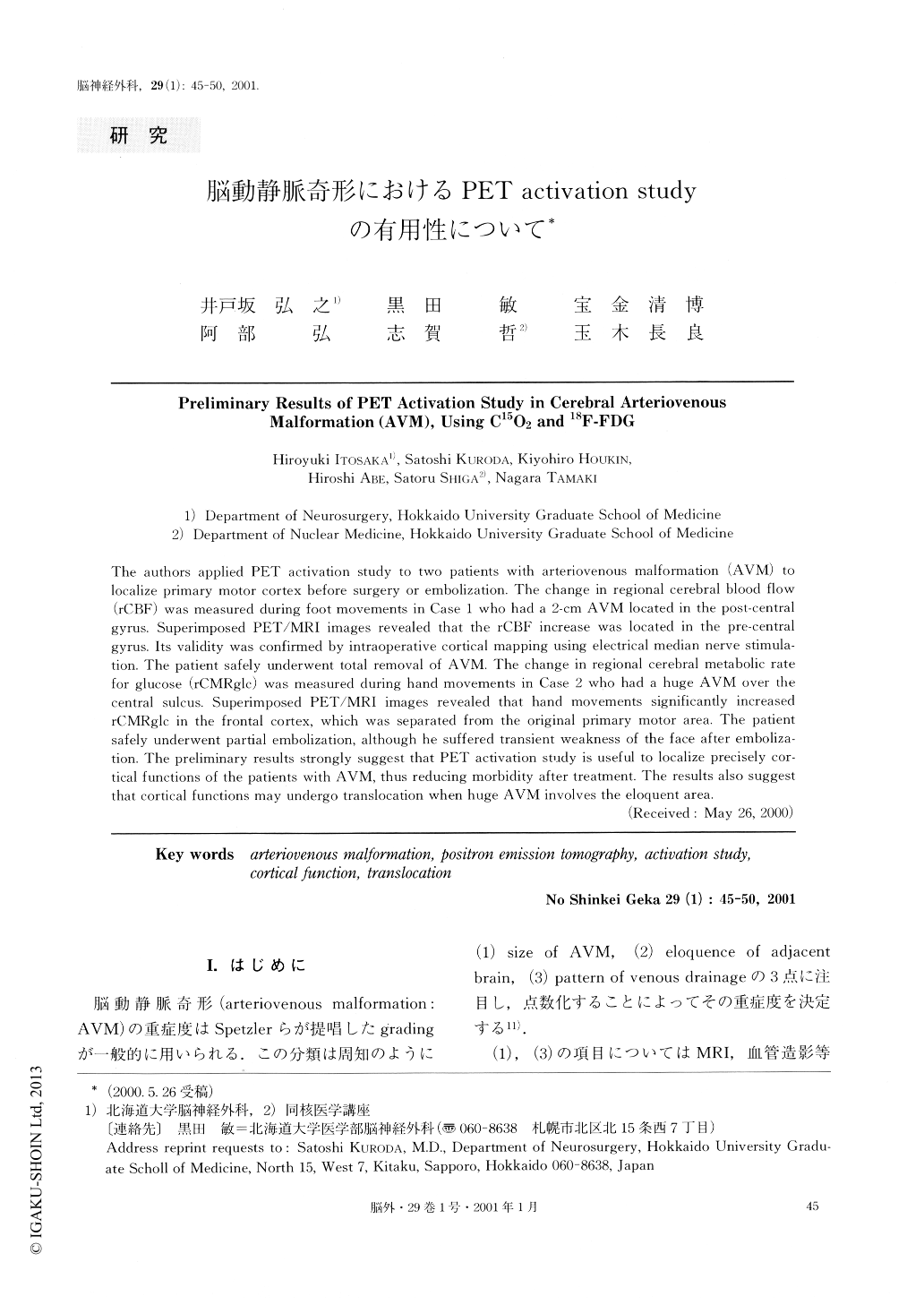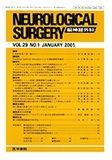Japanese
English
- 有料閲覧
- Abstract 文献概要
- 1ページ目 Look Inside
I.はじめに
脳動静脈奇形(arteriovenous malformationAVM)の重症度はSpetzlerらが提唱したgradingが一般的に用いられる.この分類は周知のように(1)size of AVM,(2)eloquence of adjacentbrain,(3)pattern of venous drainageの3点に注目し,点数化することによってその重症度を決定する11).
(1),(3)の項目についてはMRI,血管造影等を用いることにより比較的容易に決定できるが,(2)に関して実際の臨床の場では,eloquenceか否かという判断に迷う場合も少なくない.さらに,脳動静脈奇形その他の頭蓋内占拠性病変により,高次脳機能の局在に偏移を生じることが知られており,本来そこにあるべき機能がどこに偏移しているのかを正確にとらえ,温存するような治療計画を立てることが重要と考えられる.
The authors applied PET activation study to two patients with arteriovenous malformation (AVM) to localize primary motor cortex before surgery or embolization. The change in regional cerebral blood flow (rCBF) was measured during foot movements in Case 1 who had a 2-cm AVM located in the post-central gyrus. Superimposed PET/MRI images revealed that the rCBF increase was located in the pre-central gyrus. Its validity was confirmed by intraoperative cortical mapping using electrical median nerve stimula- tion. The patient safely underwent total removal of AVM. The change in regional cerebral metabolic ratefor glucose (rCMRglc) was measured during hand movements in Case 2 who had a huge AVM over thecentral sulcus. Superimposed PET/MRI images revealed that hand movements significantly increasedrCMRglc in the frontal cortex, which was separated from the original primary motor area. The patientsafely underwent partial embolization, although he suffered transient weakness of the face after emboliza-tion. The preliminary results strongly suggest that PET activation study is useful to localize precisely cor-tical functions of the patients with AVM, thus reducing morbidity after treatment. The results also suggestthat cortical functions may undergo translocation when huge AVM involves the eloquent area.

Copyright © 2001, Igaku-Shoin Ltd. All rights reserved.


